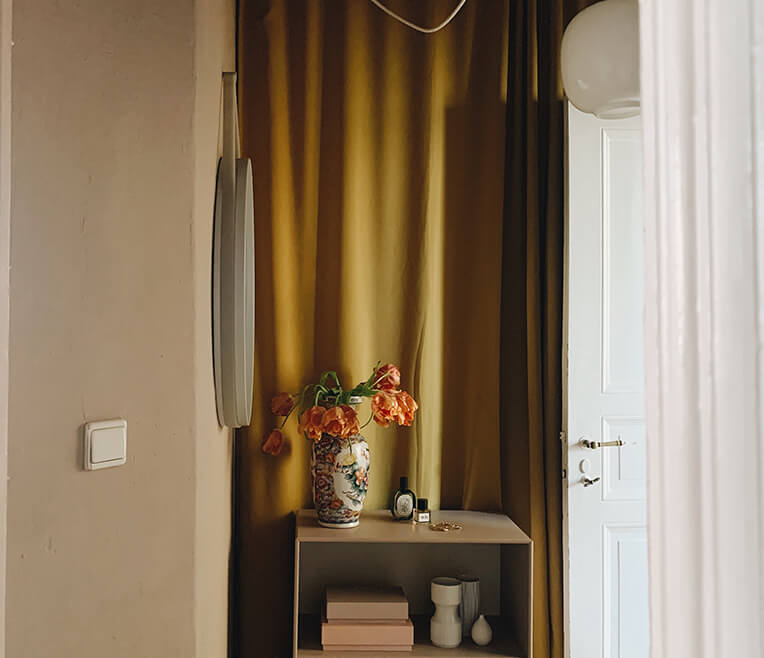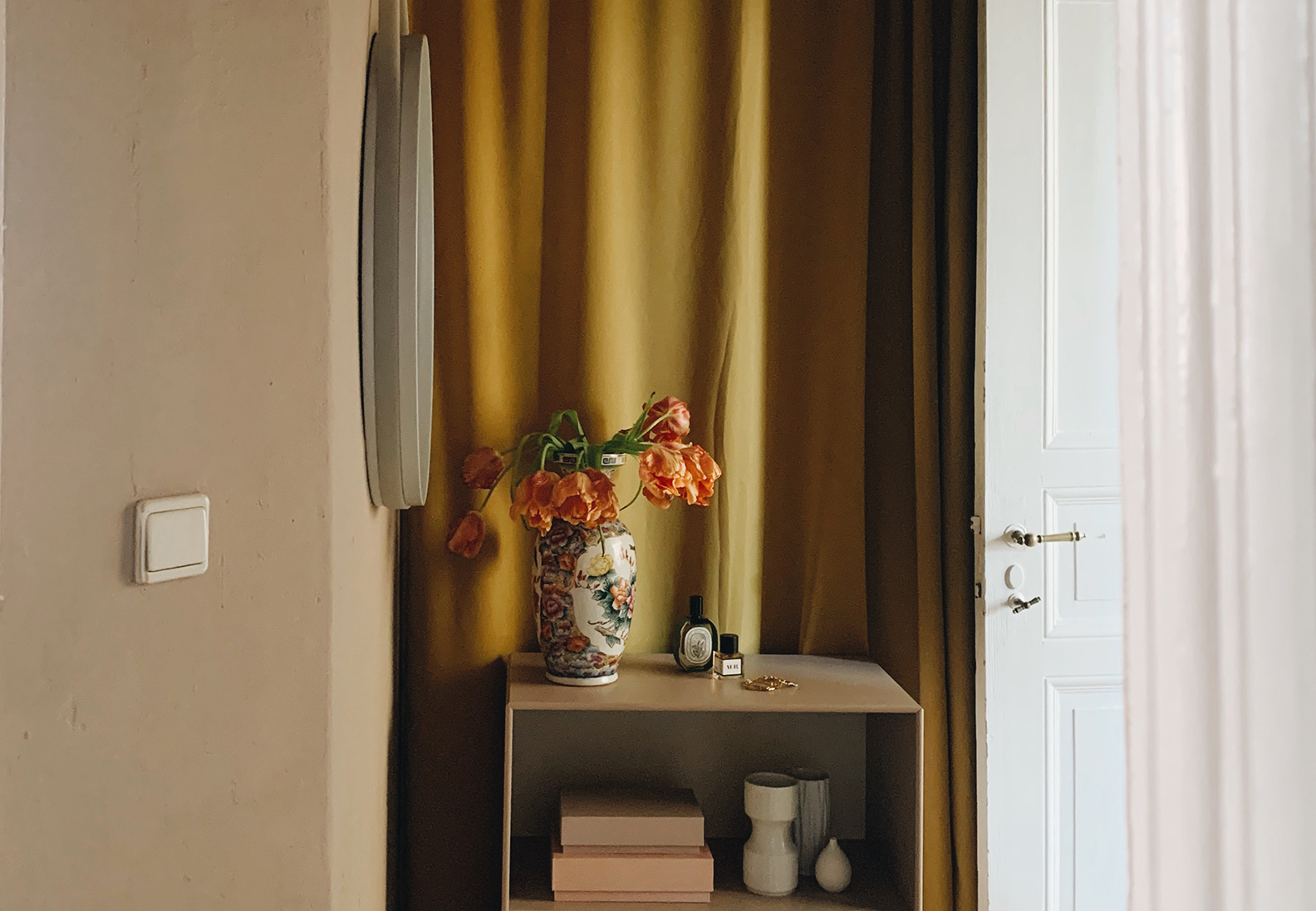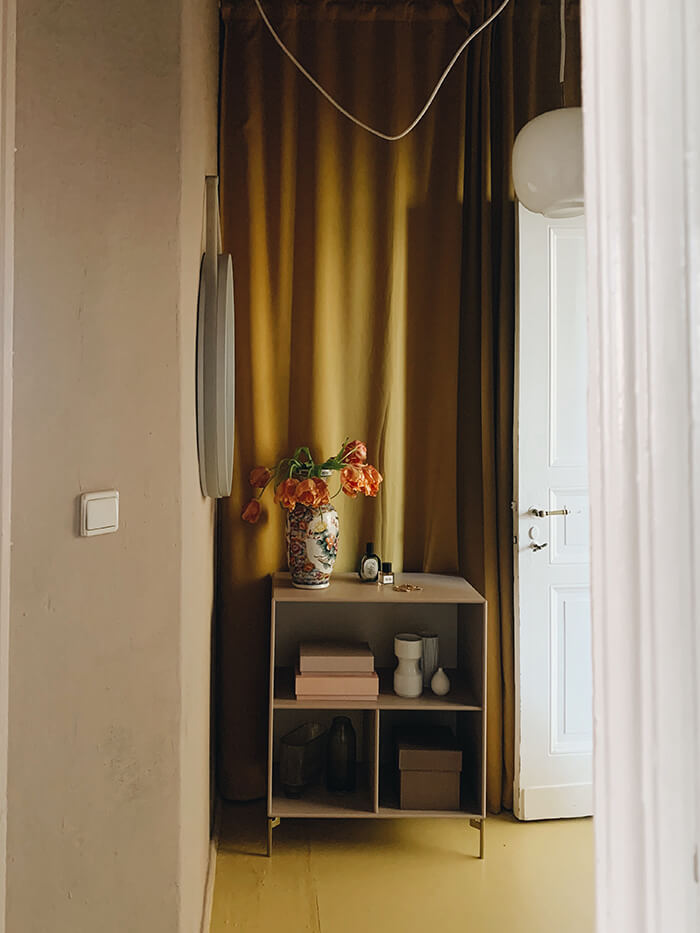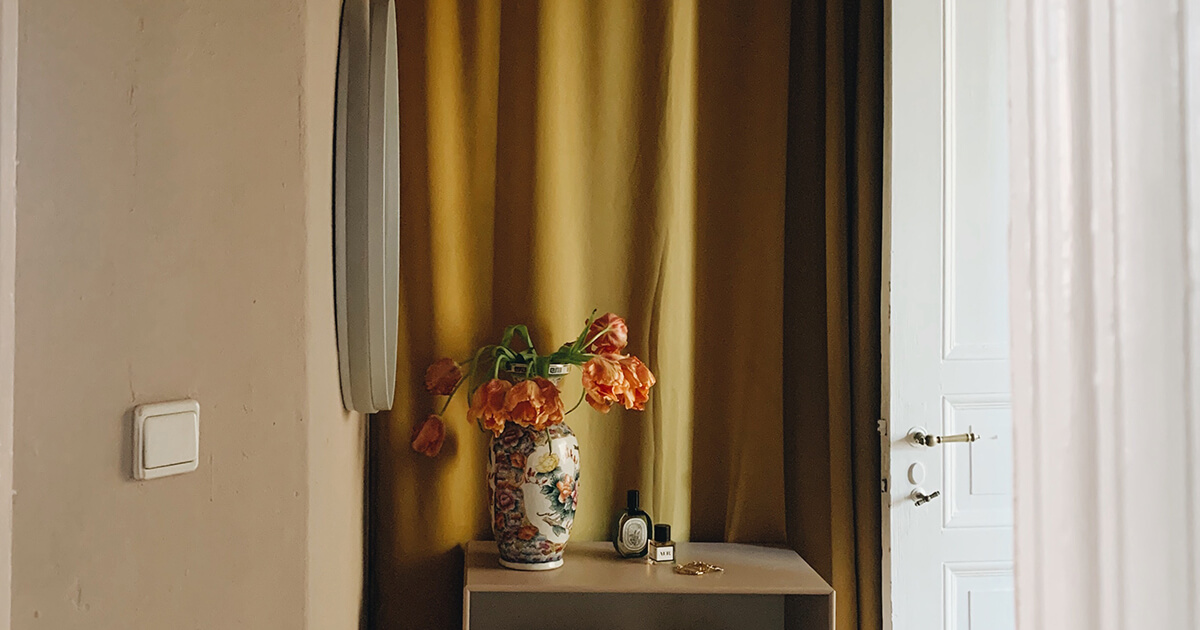
Dressing Windows – Curtains Guide
Curtains or also »window dressings« provide the necessary flair in your own home. But choosing the right ones is not that easy. In a big curtain feature we want to give a help how to approach the right choice for your curtains. Together with Caro and Interior and Design Blogger Jules from Herz&Blut we have a brand new curtains guide for you here in sisterMAG!
- Text: Carolin Kralapp
- With: Jules Villbrandt
Dressing Windows
How do I pick the right curtains?
Not only your body needs the right dress, your own four walls will also significantly benefit from appropriate »window dresses«. They might bring much-needed darkness or just add a certain something that truly makes you feel at home. Picking the right curtains isn’t always easy. This feature is supposed to ease your journey to finding the perfect »window dress« by offering advice.
Curtain is not curtain
There are two kind of curtains. Net curtains are exactly what we think of with Grandma’s top curtains: transparent. Lace or openwork lace is still used today, but more airy fabrics like batiste or airy-light voile look more modern. Curtains or drapes are opaque and made from heavy fabrics. Most drapes are therefore floor-to-floor, so that they offer sufficient privacy.
There are two kinds of seams on curtains: individual pleating, also known as »curling ribbon«, and those with clear, symmetrical pleating which are called »pleate d ribbon«. Curled ribbon is great for short cur tains of light and heavy weight, while pleated ribbon is suitable for a calm contrast to heavy and patterned fabrics.
In addition, there is also the possibility of applying curtains to a rod using so-called »eyelet tape« or punched eyelets.
How to mount
There is no one perfect solution to attaching curtains. Every room is unique and will need specific solutions. But don’t be afraid – a beautiful finish can always be achieved!
The well-known classic is the CURTAIN ROD. With a rod, you can change up the actual curtain without much fuss. Important to keep in mind: attach the rod at least ten centimetres above the window. If you want to stretch the room visually, put the rod even higher. We’d also recommend using a rod that is horizontally longer than the actual window (around ten to fifteen centimetres). TELESCOPIC RODS are perfect because they can be adjusted to the desired length.
Next to classics curtain rods, there are RAIL SYSTEMS for curtains that are usually attached right below the ceiling. They’re great for lower to medium-height rooms. The advantage: Curtains can be opened and closed without any fuss. With a rail system, you can also choose two parallel rails to layer several different curtains over another. The systems are also great for floor-length fabrics.
Another option is attaching curtains with a WIRE CABLE, which is especially useful for light fabrics. For wire cable attachments, you’ll need sturdy walls that can support the tense stretch of the cable. The curtain itself can be attached with small hooks or metal eyelets. Advantage: this option is perfectly suitable for strange places such as angled walls or to go around corners. If you’d like to use the curtain as a room separator, a wire cable can also be an option.
We’ve asked Herz & Blut
Interior and design blogger Jules Villbrandt uses a curtain in her hallway, where there is actually no window to hide. We asked her why and how the curtains change the hallway.
Dear Jules, why did you hang a curtain in your hallway?
Behind the mustard-colored curtain in our hallway is a kind of folding door to a wonderful lumber room or the chamber of horrors, as it is affectionately called in our family. The folding door construction is not awful, but I like the look of the curtains, which always remind me of Paris and boutique hotels.
Which fabric / material is the curtain made of ?
In fact, this curtain is made of synthetic fabric, which I don‘t really like. However, the advantage is that the fabric is very light and the clamp rod on which the curtain hangs can withstand the curtain without sagging.
How has the »room« changed as a result?
A curtain works wonders, without applying a lot of colour, a few panels of fabric can create a completely different feeling within a space. The room looks so much more sophisticated and naturally tidy. A lot can disappear behind curtains.
Which room does need them?
BEDROOM
The bedroom is the calm space of any home. Screening this area from light and view is the main priority for creating a calm and cosy ambiance. We recommend floor-length black-out curtains in muted colours to keep both light and heat outside. Colours and patterns that are too crazy might disrupt this. Angled windows are not well suited for these types of curtains – a roller blind might be the way to go in this case.
KITCHEN
In the kitchen, practicality and screening your space from view are the central focus. We recommend light and translucent curtains that aren’t much longer than the windows – cooking- and eating-related splatters are not compatible with floor-length curtains. Choose models with loops or eyelets and pick a material that can be washed frequently. Cotton and linen are ideal.
STRING CURTAINS
String curtains are a playful and decorative element for any home that also keep out flies, gnats and other critters. They are great for doorways to balconies or gardens.
LIVING ROOM
Keeping unwanted eyeballs out of your living room is important, but curtains should still look nice. We’d recommend floor-length curtains for any living room, as they make ceilings look higher and spread a cosy atmosphere. An addition of light or transparent fabrics can be made to let in more light during the day. The colour can, of course, be matched to the rest of your decor but doesn’t necessarily have to be! Maximalists might enjoy experimental colour and pattern clashes. For simply decorative purposes, curtains with fabric loops are more than suitable, but if you’re planning to move the fabric a lot, metal eyelets might be a better idea – or simply go for a rail system.
Helpful Tips
A few more tips about curtains and drapes
Pay attention to the attachments of your rods!
Curtains can be heavy and the constant movement of opening and closing them is additional stress. It’s really important to fix the rods on the outside and in the centre to offer more support.
The right length is key!
If you pick floor-length curtains, have them end about two to three centimetres above the floor for a harmonious appearance. Short curtains should end five to ten centimetres below the window frame.
Attach your rods horizontally!
Always use an accurate level to check if your rods are really horizontal. You’ll always notice if they’re not attached properly!
Leave enough space between the curtain and the wall!
Leave between ten and fifteen centimetres of space between your curtains and the wall so air can circulate. This is especially important when using heavy fabrics.
Stay true to your own style!
A little unusual style is always welcome – it’s your home and your rules! If you’re up for an experiment, go for it!






